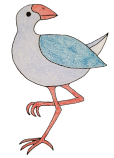I remember my first week at university for many good reasons, but the one relevant here is that is that I signed up to be a member of the Institute of Physics (IOP). The IOP is the professional body for physicists in the UK, and if you are a physicist then you should be a member. Well, I was and still am a physicist, so I joined up and have never left! For my £16 I got 4 years student membership to the IOP, a monthly magazine and a paper diary (remember those?). I was very excited about getting a magazine dedicated to physics, I hadn’t dreamed that anything like that existed during my previous 18 years and the diary turned out to be the best paper diary I ever owned. To put the diary into context if you get enough members together at the IOP you will still find someone reminiscing about the diary.
The monthly magazine turned out to be Physics World, and it was not a disappointment. I have read it every month since that fateful September in 1996. It covers all aspects of physics and work that people with physics degrees end up in, so you learn about new and exciting research that is going on, industry updates, career options, book reviews and all sorts of things. I always enjoy reading it and look forward to it landing on my mat.
I’m an active member of the IOP, being involved in their groups, reviewing chartership applications and I’m on the professional standards committee and board of trustees. At the IOP inaugural business and innovation conference last year I went to a session called ‘meet the press’. This covered different aspects of publishing in physics things like academic papers, Physics World and popular science. At this I met the Online Editor of Physics World and discovered that they were looking for people to write articles. Well, I didn’t need telling twice. At the end of the session I went up to express my interest and she asked me to come up with some ideas for articles and send them through. Was this finally my chance to get into Physics World?
I went away and came up with a few ideas for articles from my expertise that I thought would make interesting reading. Created an outline of what would be covered in the different options and sent them through. My short list was:
· ‘The Radio Frequency Chamber of Secrets’ No basilisks in sight, but this would look at the different ways of testing antenna systems and the pros and cons of using free space test sites, anechoic chambers, semi-anechoic chambers, compact ranges, flat plate measurement systems etc.
· ‘SCANNING ANTENNAS – IS DIGITAL STEERING THE FUTURE OF FLYING ANTENNAS?’ Looking at why you need scanning antennas on flying platforms, what has been done historically and where new technology could take it.
· ‘MONOPULSE ANTENNAS FROM DESIGN TO TEST’ Monopulse antennas are not widely known but are very useful in range finding systems, this article would look at what monopulse antennas are, why they are used and how you test them.
· ‘IT’S ALL IN THE RADOME’ Radomes are seen all over but their importance is often overlooked. This article would have looked at what radomes are, why they are used, how they are designed, how they are tested and look at new manufacturing techniques.
I thought the most suitable article was the second one and the editor agreed, so I went ahead and wrote it.
I’ve never worked with an editor before, I’ve had my writing marked at Uni and my academic papers reviewed, but never edited. I hoped it wouldn’t be like GCSE English all over again, where I was continually criticised for everything I wrote. Although the main issue seemed to be that everything I wrote allegedly read like a science report, which might not be an issue here. Anyway, I took that as a compliment, despite how it was meant. However, working with a professional editor was nothing like my memories of school English. It was a straightforward, useful and enjoyable process that I hope to do again. I sent a draft version of the article through; useful suggestions and alterations came back to make the article flow better and be more impactful, and I made them. With a couple of rounds of back and forth the article came into great shape. I was then asked to suggest some images and the article was quickly in proof form and ready for a final review. Just a few final tweaks were made at this point and then the article was ready to go out for publication, which it did in the August edition of Physics World in their Instruments and Vacuum Briefing. Nearly 24 years later I got to read my own article in my favorite magazine. Lifegoal completed!
I even managed to get one of my thesis pictures in, somehow re-using information from my thesis always makes me feel it was worthwhile doing! I hope I’m not the only one with that attitude. I also got to use a picture of my favorite antenna to visit, the AESA at RAF Fylingdales in the North York Moors. Although, I preferred visiting them when they were the golf balls, as you will see below.
My finished article is online on the IOP Publishing Physics World site, so if you want to read it in full and learn about the future of flying antennas head over to the Physics World website: https://physicsworld.com/a/the-future-of-flying-antennas/
A picture of the ‘golfball’ radomes at RAF Fylingdales in the north York Moors mid 1980’s.
A young Tamara posing infront of the golf balls sporting a ‘Rock On Tommy’ badge! My antenna obsession clearly started at a young age.



